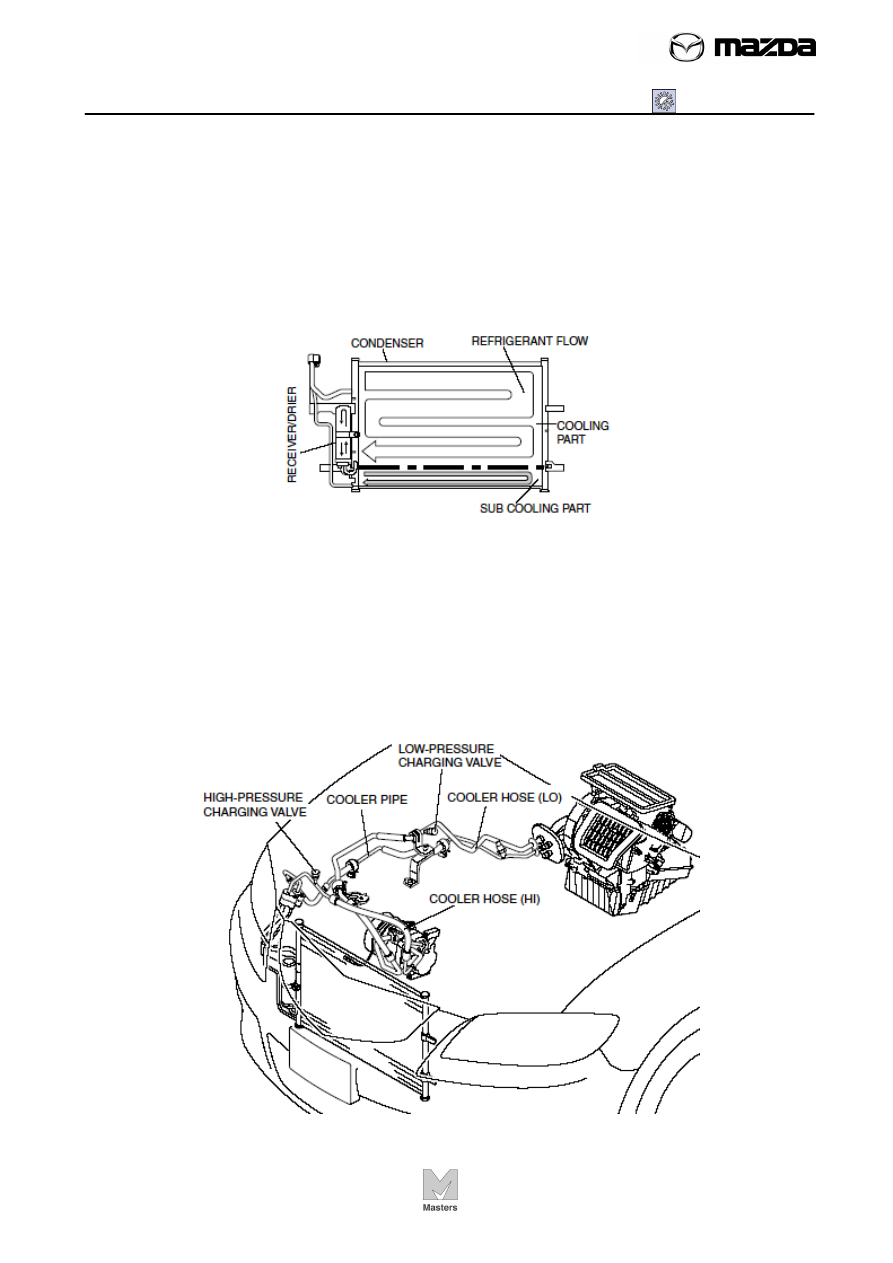Mazda Training manual - part 282

AIR CONDITIONING
SG01 - Basic System
SG01-7
TC070-15-01H
Condenser
• The figure below shows a sub cool condenser. It is a multi-flow condenser which is
equipped with a sub cooling part and integrated with a receiver/drier.
• The sub cool condenser separates liquid-gas refrigerant initially cooled at the
condenser via the receiver/drier, where it returns again to the condenser sub cooling
part and is cooled, accelerating liquefaction and improving cooling capacity.
Refrigerant life
• The pipes in the refrigerant lines are made of aluminum alloy and the hoses are
made of rubber (flexible hose).
• A high-pressure charging valve is located on the cooler hose (HI) and a low-
pressure charging valve is located on the cooler hose (LO).
Z6